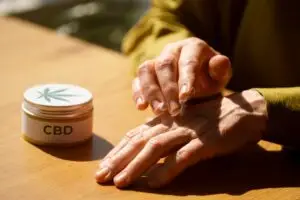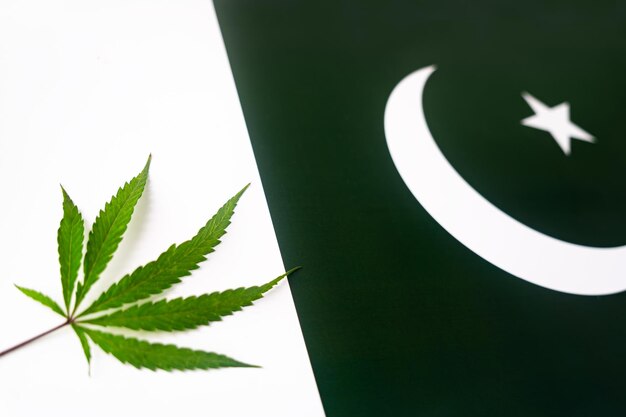Narcotics have been an important source of income for tribals at the Pak-Afghanistan border since time immemorial. It did not emerge as a socio-economic and political problem until 1978. Opium produced in this region was consumed locally. No one cared or thought about it as a threat. The problem started with the Soviet invasion of Afghanistan followed by the US-Pak joint counter-intervention. Cultivation of poppy and cannabis was encouraged during the military dictatorship of Zia-ul-Haq to finance terrorist activities in India. General Zia’s support for cultivation of narcotic drugs gave a new dimension to international drug trafficking and terrorism in India. His target was to destabilise India.

But in the process he failed to anticipate its repercussions on Pakistan. Heroin addiction spread like an epidemic during his martial administration. The UNDCP report confirms that there were 1.5 to 1.9 million drug addicts in Pakistan in 1993. The regime, which was popular for its iron hand did not control free distribution of heroin and hashish in universities and colleges in Peshawar, Karachi, Lahore and Rawalpindi where these drugs were cheaply available for Rupees 15 to 60 per packet depending on their purity. During this time drug traffickers operated freely and became billionaries within a short span of time and organised themselves as syndicates on the same lines as the Latin American drug barons. They established contacts in the law enforcement agencies, funded political parties, used economic platforms and bribed officers to maintain production and supply of narcotic drugs in the international market.
General Zia’s involvement in drug trafficking came to light only after his death when the Minister of State for Narcotics, Mian Muzaffar Shah revealed that Pakistani drug syndicates grew under the patronage of General Zia. Raza Qureshi, a Pakistan drug trafficker who was arrested by the Norwegian Police at Oslo’s Fornebu Airport in 1984, exposed Zia’s drug connection. The Norwegian Police disclosed three names of Pakistani nationals-Tahir Butt, Munawar Hussain and Hamid Hussain patronised by General Zia. The Norwegian Police visited Islamabad to investigate the matter and indicted these three for drug crimes. But the Pakistan government did not arrest them because of their political connections. Finally, when the Norwegian government complained against inaction by the law enforcement agencies and threatened diplomatic action, these three were arrested.
One of the culprits, Hamid Hussain was not only the vice president of Government owned Habib Bank, but was as close as a son to the wife of General Zia ul Haq. He handled Zia’s account and used banking channels to launder drug proceeds. The most startling revelation that confirmed Zia’s drug connection was the case of one of his ADCs, whose name was not disclosed. The ADC concealed heroin in 100 precious lamps to be gifted by General Zia to the delegates at a special session of the UN General Assembly. General Zia suddenly changed his programme to travel via Iran and Iraq. In the process of shifting his baggage one of the lamps broke spreading heroin at New York Airport. Apparently the customs official checked all the lamps which were filled with heroin and seized them.
The former Chief Minister and Governor of NWFP, Lt. General Fazle Haque is another important drug dealer who dominated Pakistani drug syndicates. Popularly known as the Noriega of Pakistan, Haque was responsible for promoting growth of the drug industry in the Swat Valley of NWFP. He successfully organised transshipment of heroin from Pakistan to the international market through business contacts.
Obviously during Zia’s tenure drugs played an important role in decision-making. After his sudden death in a plane crash in August 1988, Gulam Ishaq Khan, a close associate of Zia, took over. An Ismaili Pathan from NWFP civil services he rose to prominence during Zia’s time. His involvement in narcotics started after he joined the provincial civil service of NWFP and became a close associate of General Zia. He and the Chief of Army Staff General Aslam Beg worked together for the growth of the drug industry at the Pak-Afghan border. His drug connection came to light during the investigation of the biggest bank fraud in the world namely, the BCCI. Aslam Beg and Ishaq Khan became very close and strongly advocated the idea of Pakistan’s decision to join the race for nuclear power. In the name of the Islamic Bomb they generated money from Arab countries and got away from the drug money laundered by BCCI. It is relevant to note that they founded an institute called Gulam Ishaq Khan Institute of Engineering Science and Technology, which was the main recipient of funds from BCCI. In the name of funds, for a nuclear bomb, the duo promoted growth of narcotic drugs in the Golden Crescent.
The situation, however, did not change when Benazir Bhutto came to power. She exposed General Zia because it suited her political agenda. Her husband Zardari is well known for his criminal connections and her government was dismissed on corruption charges. In so far as Benazir’s Peoples Party (PPP) is concerned, during personal interaction with Pakistani prisoners under NDPS Act languishing in Jammu Central Jail, the author was told that the PPP members were directly involved in the drugs trade. The prisoner himself was a cousin of PPP’s Lahore President. Lahore is one of the centres for narcotic drugs trade in Pakistan.
Hazi Iqbal Beg is another important Pakistani drug dealer with political connections. A Lahore based landlord and owner of innumerable business enterprises he organised a powerful drug syndicate. Beg along with his partners, Sohail But (brother-in-law of Nawaz Sharif) and Shaukat Ali Bhatti were elected members of the Punjab Legislative Assembly on the ticket of Islamic Jahmuri Ittehad (IJI), a political party formed by an ISI Chief General Hamid Gul. Nawaz Sharif maintained close association with Beg and helped him acquire denationalised industrial units including the Muslim Commercial Bank where he (Sharif) is a benami partner. Beg continued to nurture his ties with the Pakistani premier and simultaneously funded election of Mehraj Khalid of PPP who later became Chief Minister of Punjab. Beg thus remained loyal to both Sharif and Benazir. After the fall of Benazir’s government he was charge-sheeted for narcotic drugs smuggling. However, his close association with Sharif got him released on bail.
Another equally important drug dealer Malik Waris Khan Afridi, was appointed by Benazir as Minister of state for Tribal Affairs. He was elected on a PPP ticket from Khyber Agency (N-33, Tribal Areas VII) in 1988. His commitment to PPP was so strong that he tried to save her government by bribing members against the no confidence motion tabled by Nawaz Sharif in 1989. After the fall of the Benazir government he was convicted for smuggling of opium and hashish from Khyber Agency.
These are some of the many instances of the drug syndicate’s control over Pakistan politics. There are hundreds of political leaders into drug business in Pakistan. The very fact that South West Asia (Pak-Afghan) is the biggest supplier of heroin to the international market and that Pakistan earns US $1.5 billion (UNDCP, 1993 estimate) from export of refined heroin substantiate that the narcotic drugs trade goes on under the nose of government law enforcement agencies. Since political leaders are beneficiaries of the international drug trade, it is not possible to keep intelligence and army away from the scene especially in the light of the fact that these two play a significant role in Pakistan politics.
Original Article by :Kshitij Prabha Associate Fellow IDSA
https://ciaotest.cc.columbia.edu/olj/sa/sa_jan01prk01.html#txt11




Appreciate this post. Let me try it out. https://Ukrain-Forum.Biz.ua/